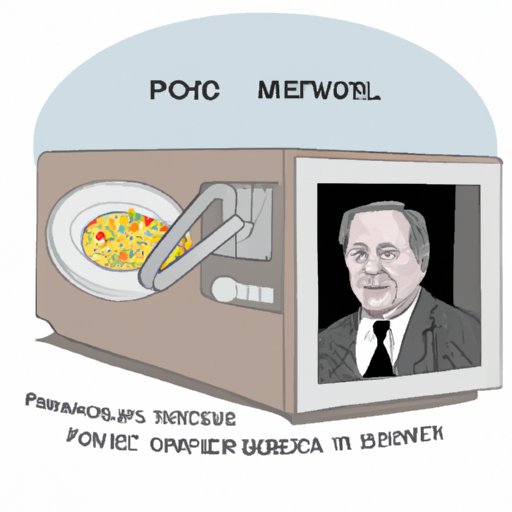Introduction
The microwave is one of the most ubiquitous kitchen appliances, found in almost every home around the world. But what is a microwave and how did it come to be? This article will explore the history of the invention of the microwave, from its early days in World War II to the modern day. We’ll take a look at the pioneers behind the invention of the microwave, as well as how it has changed the way we cook.

Historical Timeline of the Invention of the Microwave
The invention of the microwave dates back to World War II, when an engineer named Percy Spencer noticed that a candy bar in his pocket had melted while he was working near a magnetron. He began experimenting with microwaves and eventually developed the first “Radar Range,” which was the first microwave oven. The Radar Range was introduced to the public in 1947, and was soon followed by the introduction of the Tappan Stove Company’s microwave oven in 1955.
In 1967, Amana released their version of the microwave oven, which was more affordable and efficient than previous models. This model was quickly adopted by consumers and became the standard for many years. In the 1970s, microwave ovens began to become more sophisticated and featured built-in timers and other features.
Since then, the technology has continued to evolve and now there are a variety of different types of microwaves available, including convection microwaves, combination microwaves, and countertop microwaves. Each type offers different features and benefits for different types of cooking.
How the Microwave Changed the Way We Cook
The invention of the microwave has had a huge impact on the way we cook today. Microwaving offers a number of advantages over traditional methods of cooking, such as speed and convenience. Food can be prepared quickly and easily, without the need to wait for an oven to preheat or for pots and pans to boil.
Microwaving also saves energy as it uses less electricity than other cooking methods. In addition, food cooked in the microwave retains more nutrients than food cooked in other ways, making it healthier. And because microwaves heat food quickly and evenly, they can help reduce the risk of food poisoning.
Finally, microwaving allows for more creative recipes and dishes, as it can be used to cook a wide range of ingredients. From steaming vegetables to baking cakes, the possibilities are endless.

The Science Behind the Invention of the Microwave
Microwaves are a form of electromagnetic radiation, which is a type of energy that travels in waves. These waves cause molecules in food to vibrate, creating friction and heat. This is why food cooked in a microwave heats up faster than food cooked in an oven or on a stovetop.
Different types of microwaves have different wave patterns and frequencies, which affect the way they cook food. Convection microwaves use a fan to circulate hot air inside the oven, allowing for even cooking. Combination microwaves offer both microwave and convection cooking, while countertop microwaves are smaller and cheaper.

Exploring the Pioneers Behind the Invention of the Microwave
Percy Spencer is widely credited as being the inventor of the microwave oven. A self-taught engineer, Spencer was working on the development of radar systems during World War II when he made the accidental discovery that microwaves could melt a chocolate bar. He quickly applied this knowledge to create the first “Radar Range,” which was the first microwave oven.
Spencer was not the only pioneer in the field of microwaves. Other key figures include Robert D. Maurer, who developed the first practical microwave oven; John Mullin, who developed the first commercial microwave oven; and Raytheon Corporation, which was the first company to make microwave ovens available to the public.
Conclusion
The invention of the microwave has revolutionized the way we cook, offering speed and convenience as well as energy savings. It has also enabled us to experiment with new recipes and dishes that were previously impossible. The invention of the microwave would not have been possible without the pioneering work of Percy Spencer and other key figures in the development of microwaves.
The invention of the microwave has changed the way we cook, and it continues to evolve with new technologies and innovations. While microwaves may not be the only way to cook food, they remain a popular and convenient option for many households.
(Note: Is this article not meeting your expectations? Do you have knowledge or insights to share? Unlock new opportunities and expand your reach by joining our authors team. Click Registration to join us and share your expertise with our readers.)
